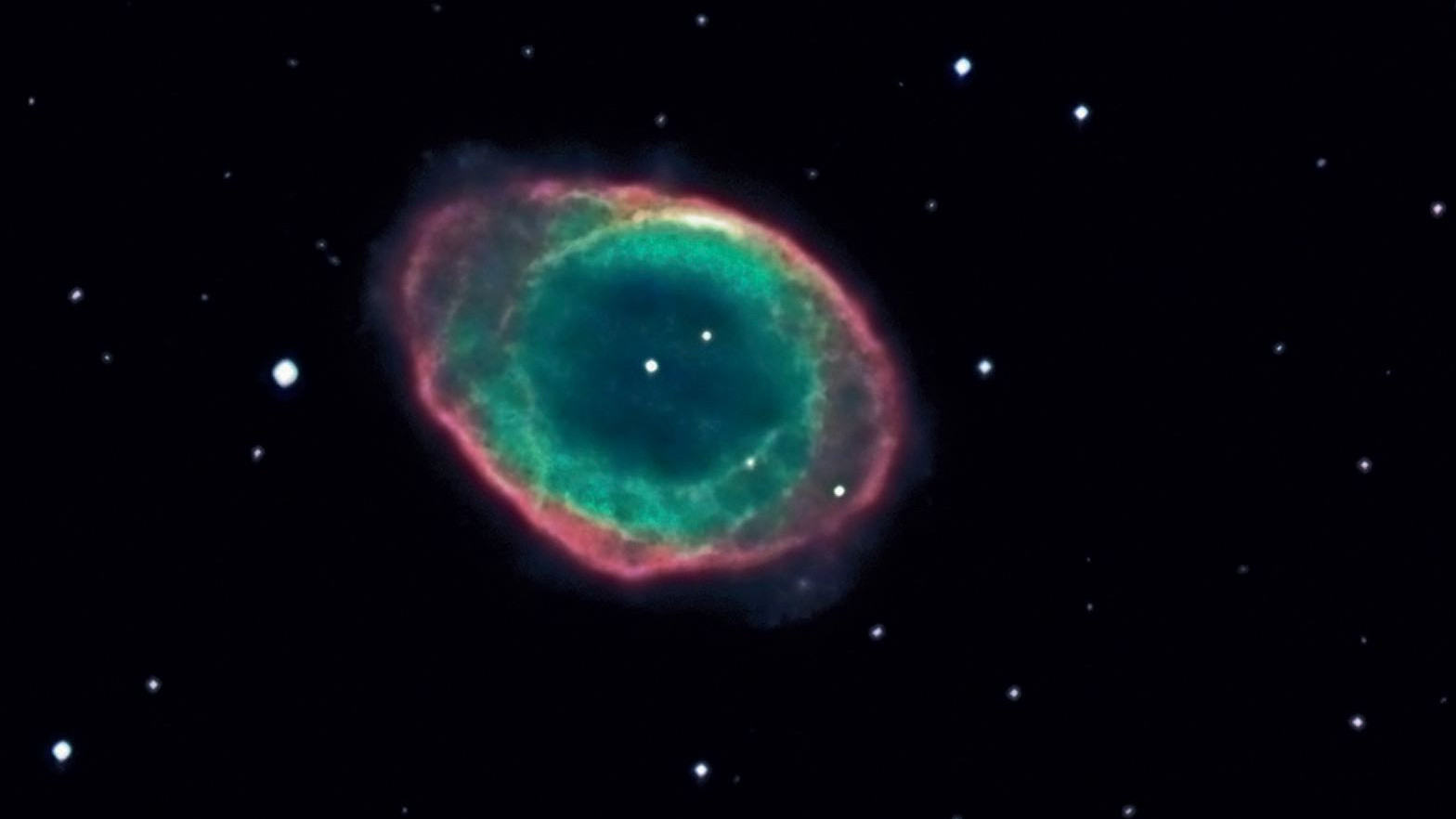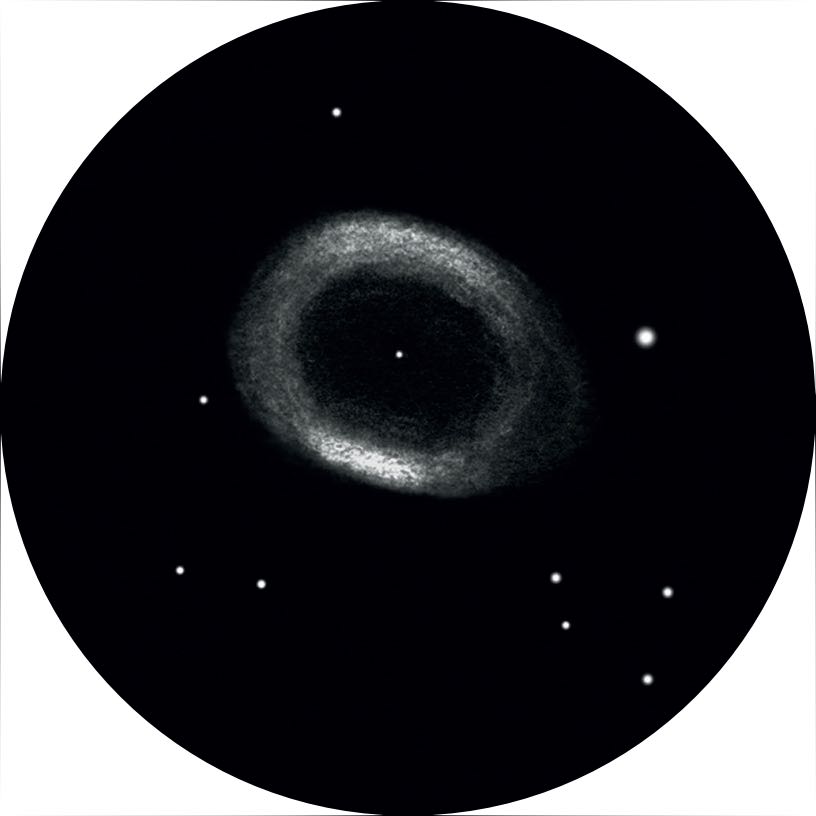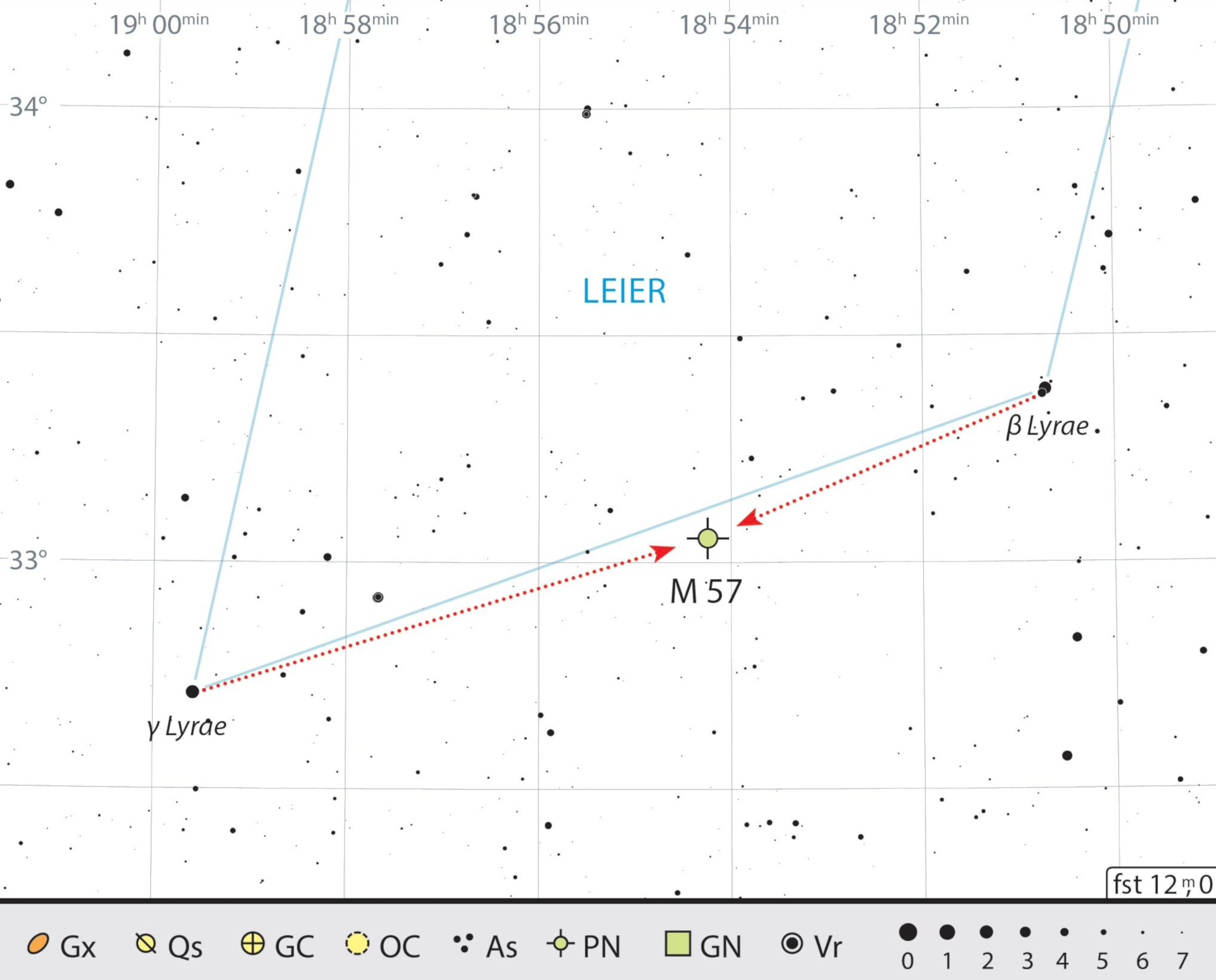The Ring Nebula M57
The central star remains a difficult target, yet the planetary nebula in Lyra is one of the most beautiful objects in the night sky.
 The Ring Nebula in the constellation of Lyra. Sebastian Voltmer / CCD Guide
The Ring Nebula in the constellation of Lyra. Sebastian Voltmer / CCD GuideThe Ring Nebula Messier 57 in the constellation of Lyra is one of the most observed summer and early autumn celestial objects. To find it, simply aim for the centre of the two lower corner stars γ and β Lyra in the parallelogram-shaped constellation of Lyra.
Uranus as an example
At low magnification, M57 stands out as a very small, blue-greenish magnitude 9 star, which cannot be properly focused. At a slightly higher magnification, it looks round like a planet. This is also the reason for the misleading name of this class of objects. Astronomer Antoine Darquier discovered the nebula in mid-February 1779 and compared its appearance to that of a planet. This inspired the astronomer Friedrich Wilhelm Herschel to call this type of nebula a planetary nebula based on the then newly discovered planet Uranus. Charles Messier included the Ring Nebula with the designation M57 in his catalogue.
Ring of smoke
 Drawing of the Ring Nebula as seen through an 18-inch Dobsonian with 300x-450x magnification. Rainer Mannoff
Drawing of the Ring Nebula as seen through an 18-inch Dobsonian with 300x-450x magnification. Rainer MannoffMany planetary nebulae are not circular, but instead oval, butterfly-shaped or rectangular. Messier 57 is a slightly elliptical ring of gas that is around 2,300 light years away from Earth. A not very massive star used up hydrogen over its lifetime, and lost its outer shell. Its diameter is 0.9 light years, with the faint areas extending to up to 2.4 light years across. It has an apparent diameter of around 118 arc seconds and was created about 15,000 years ago. The actual shape of the gas shell resembles a torus and looks more like a life belt or tyre. The ring is still expanding slowly at a rate of around 19 km/s.
Messier 57 can be seen under a dark country sky with an aperture of 50 mm or more. However, the smoke ring only appears using apertures of 100 mm or greater together with 100 to 150 times magnification. Telescopes with 150 to 200 mm aperture do not reveal any more structure, but the nebula does appears brighter. On closer inspection, the oval shape stands out and different brightness levels are noticable. Nebula filters are not necessary, however you should try increasing the magnification.
Central star
In photographs, the Ring Nebula appears beautifully coloured, as the central star excites gas, causing it to glow. However, the different colours cannot be discerned visually. The central star is a white dwarf with a surface temperature of 70,000°C. However, with an apparent magnitude of 15.8, it is extremely faint. The nebulous background inside the ring adds to the difficulty. To observe the central star visually, you need a telescope with at least a 25cm aperture, however it can be easily seen in photographs.
 Finding chart for the Ring Nebula in the constellation of Lyra. J. Scholte
Finding chart for the Ring Nebula in the constellation of Lyra. J. ScholteAuthor: Michael Feiler / Licence: Oculum-Verlag GmbH
